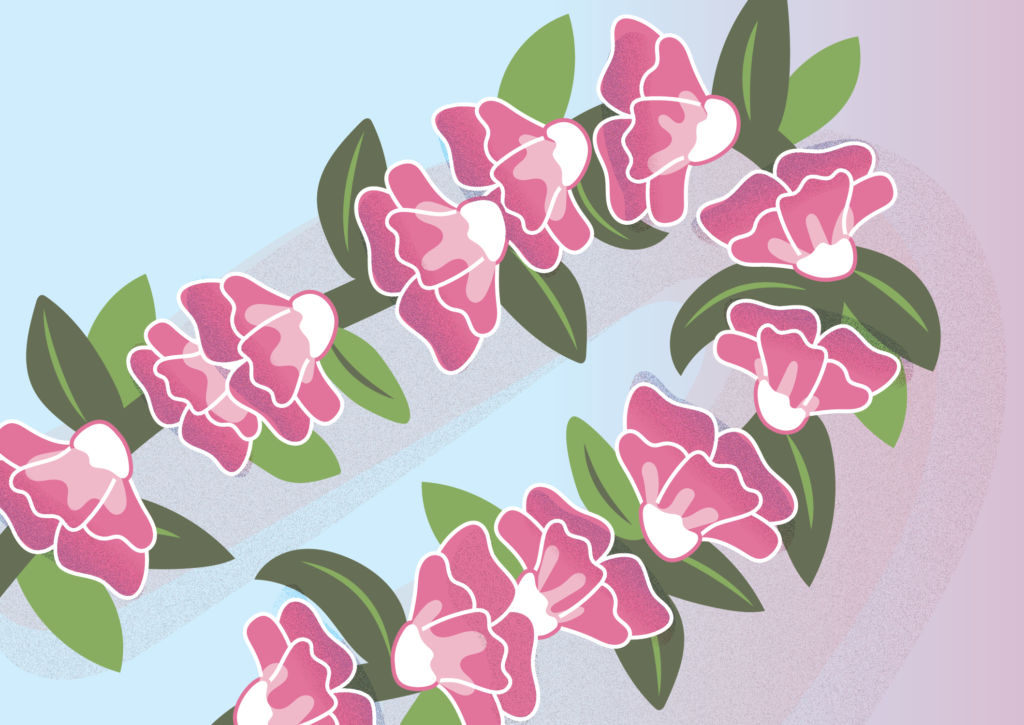May Day is Lei Day in Hawai’i Nei
Since the 19th century, May Day has been internationally linked to the workers’ rights movement, often involving protests and other forms of political activism. In Hawai’i, however, May Day is “Lei Day” and functions as a day for the celebration and appreciation of Hawaiian culture.
The history and contextualization of May Day, as well as its international implications, remained foreign to me until I moved from Hawai’i to Seattle, a year ago.
On May 1, 1886, American workmen organized a nationwide strike for eight-hour workdays. The strike continued for several days, with the number of participators eventually growing to about 100,000.
Two days later, Chicago Police clashed with protesting workers, resulting in the death and injury of several workers. At a rally protesting police brutality the next day, a bomb went off, killing seven police officers and eight more civilians.
To commemorate the Haymarket Affair, the International Socialist Conference declared May 1 an international holiday for labor rights in 1889. Over time, many countries around the world came to recognize the workers’ history behind May Day.
“Lei Day” was an idea conceived in 1927 by the poet Don Blanding, who felt the Hawaiian tradition of giving and receiving lei needed recognition. In 1929, Hawai’i lawmakers officially recognized Lei Day as a state-wide holiday.
Lei, garlands and wreaths made of flowers, are a significant part of Hawaiian culture. Lei can be made out of many different materials and may come in a variety of styles. Yet, all lei symbolize “aloha”, or respect and love. Intricate, beautiful, and meticulously crafted, lei are said to carry the mana, or spirit, of their makers, which is passed on to the lei-receiver. While physically, lei last for only the briefest of moments, the thought and impact of lei live on forever.
Originally, Lei Day celebrations were held in Honolulu City Hall, with a pageant and award-winning lei displayed for public viewing. However, as the popularity of Lei Day rose, the event outgrew City Hall and was moved to Kapiolani Park in Waikiki, where yearly celebrations are still held to this day.
This year Hawai’i celebrated its 92nd annual Lei Day, with the theme “Lei Kahakai,” or seashore lei. There were 165 entries for the lei-making contest. The fresh flower lei from the contest were later laid on the graves of Hawai’i’s former ali’i, or members of the royal family.
As a child, I sewed lei every year in preparation for Lei Day with my mom, little sister, and aunty. The four of us would sit on a picnic blanket in my backyard, shaded by fruit trees, chatting, drinking lemonade, and sewing lei until dinner. My sister and I would fill buckets with flowers from our plumeria trees to bring back to my mom and aunty, daringly climbing brittle branches and laughing as our hands grew sticky from the flowers’ milk. On Lei Day, we would excitedly distribute our finished lei to teachers, neighbors, family, and friends– relishing in the act of giving.
Schools in Hawai’i have embraced Lei Day with performances and pageantry. Many schools’ Lei Day programs incorporate different aspects of the Hawaiian culture, including hula, food, music, and chanting. Often, these performances engage the surrounding community in some way, and feature a court of princesses, representing each Hawaiian Island, and a Lei Day Queen. Lei Day Queens are selected based on their hula dancing and lei-making abilities, command of the Hawaiian language, and presence. Being crowned Lei
Day Queen is an honor many young women aspire to.
On the surface, Lei Day and May Day seem to embody completely different ideologies. However, both holidays bolster ancestral appreciation and cultural pride, in addition to fostering community strength and unity. May Day and Lei Day would not be the institutions they are today without both the efforts and passion of our forebears, as well as the reception and support of the public.
A lei symbolizes connection and this past May Day I found myself connecting two different aspects of my life: my past in Hawai’i and my present in Seattle.
The editor may be reached at
arts@su-spectator.com


